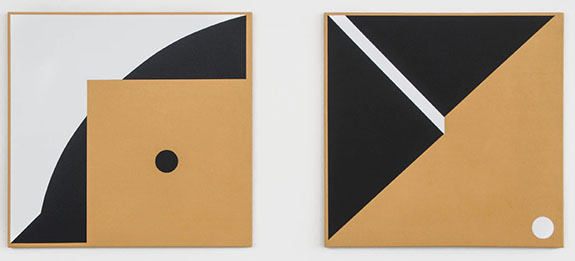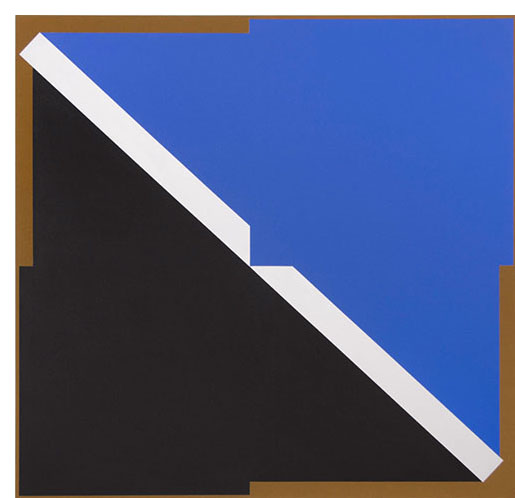 |
 |
The most obvious "deception" in DeLap’s work is its outward appearance. The flat, affect-free paint handling and hard-edged geometric forms most vividly recall Mondrian and Constructivism, art that kept viewers at a cool distance. DeLap’s, by contrast, is an art of profound sensory and psychological engagement. A key innovation, which he arrived at in the early 1960s, was painting geometric forms onto irregularly shaped canvases with backward curving (hyperbolic) edges. The resulting objects simultaneously convey the dimensionality of sculpture and the illusionism of painting. While much has been made of those edges, a more compelling aspect is the precision with which DeLap juxtaposes painted shapes on the surfaces. He does it graphically, using bold, interpenetrating forms, which create the appearance of volume as opposed to painterly illusionism, which tries to convince us that something exists behind the surface.
 |
and other seeming discrepancies) that come to assume monumental importance because of how they re-route expectations about how shapes and volumes should behave. In this show, which includes intimate drawings, collages, medium-sized paintings and large sculptures (made between 1992 and 2014), there are many such disruptions. One of the strongest examples, located on the second floor of the gallery, is Ibis: a square within a square whose upper left edge bisects a sloping silhouette, fracturing the picture into a half dozen discrete forms that confuse positive and negative space. I could go on about how these shapes interact, but words tend to obscure more than they illuminate when it comes to telegraphing the impact of works like these. You have to see them.